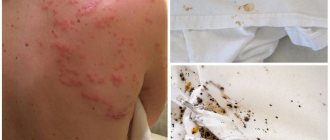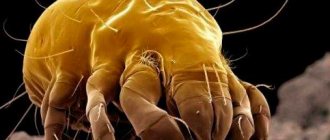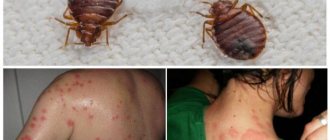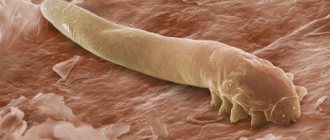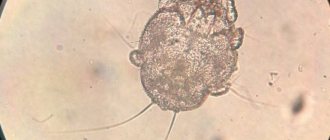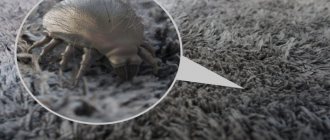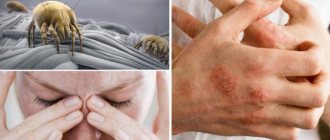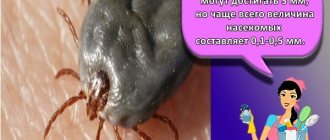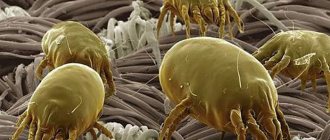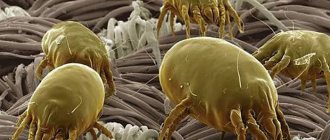- August 31, 2018
- Allergology
- Evdokimova Irina
There are cases when a person regularly experiences unexplained allergy attacks. In this case, it is impossible to identify the irritant. Nowadays, it has been established that the cause of an allergic reaction can be the smallest parasites Dermatophagoides Farinae, living in house dust. How to get rid of them? We will consider this issue in the article.
A little history
In 1964, scientists from Holland and Japan discovered dust mites. They investigated what it was, Dermatophagoides pteronyssinus, and studied the reaction of patients who had sensitivity to house dust. The response from their body was positive. Thus, scientists have found that the presence of mites in house dust is an allergenic factor for people with a genetic predisposition to atopic dermatitis. It was after these discoveries that active study of dust mites began. How to get rid of them at home will be discussed further.
Diagnostics
How to diagnose dermatophagoidosis? To do this, you need to be tested for antibodies to the allergens Dermatophagoides Farinae. Blood is taken from patients for testing. Using the chemiluminescence immunoassay method, the amount of class E immunoglobulins in the biomaterial is determined. Increased production of these proteins is observed in cases of allergies to dust mite waste products.
Varieties
Nowadays, there are more than 150 species of dust mites. All of them can be classified in three areas:
1. The first of them find food in house dust and reproduce there. These mites feed on skin scales and particles of microflora living on the skin. These are pyroglyphid mites, as well as granary-grain mites, living in places where cereals and flour are stored. The last of them feed on human products and mold. It is this variety that causes allergies among agricultural workers. There are mites that cause allergic reactions in bakery workers (Acarus siro and Tyrophagus putrscentiae), others (Tyrolichus casei) are responsible for the appearance of “cheese” dermatosis, Glycyphagus domesticus causes dermatitis in grocery workers.
Since the beginning of the 90s, such inhabitants have increasingly begun to be found in people’s apartments. This is due to the storage of large quantities of products in unsuitable premises. People suffering from bronchial asthma acquired sensitization to granary mites, its rate ranged from 6 to 20%.
2. The second type includes predators that eat ticks of the first type. This includes cheyletids, gamasaceae and others.
3. There are also mites that fall into dust by accident, without being able to reproduce there. This is the third variety. Such mites do not survive in human pillows and beds, unlike representatives of the first group. According to experts, they do not cause allergies in people.
Reviews
You can find many positive reviews about the use of the desensitizing agent “Lace Dermatophagoides”. After a course of therapy, patients experience complete recovery. Patients note that after treatment they can remain calm even in very dusty rooms. No signs of allergy appeared.
Patients attribute only the high price of the drug "Lace Dermatophagoides" to the disadvantages of desensitizing therapy. The cost of this medicine ranges from 7,000 to 10,000 rubles.
However, some allergy sufferers are wary of this remedy. After all, it contains dust mite enzymes. Yet such fears are unfounded. Allergens included in the drug are subject to special treatment. As a result, they lose their dangerous properties and cannot cause harm to the body.
Patient reviews do not report any side effects of Lays Dermatophagoides tablets. Today, this drug is practically the only remedy that can permanently relieve a patient from an allergy to dust mites.
Dermatophagoides pteronyssinus - what is it for humans?
This is the designation for pyroglyphide mites that live in house dust and form allergens for humans. They are considered the most harmful to people. How to remove dust mites is a question that worries many allergy sufferers.
The tick's body produces large amounts of protein and other molecules. It is these products of their vital activity that cause allergic pathologies such as:
- allergic rhinitis (symptoms in adults and children are a profuse runny nose);
- atopic dermatitis, neurodermatitis, eczema (skin rashes);
- bronchial asthma (coughing attacks).
In rare cases, the development of systemic anaphylaxis may begin, especially when ingesting foods with a high content of mites and their waste products. Then symptoms such as rhinorrhea, Quincke's edema, and shortness of breath appear.
In response to exposure to tick proteins, IgG antibodies begin to form in the body of sensitive people to block the path of an allergic reaction. In medicine, a technique is used to determine the amount of these antibodies to make a diagnosis in allergy sufferers.
Symptoms
Doctors call an allergy to the waste products of dust parasites dermatophagoidosis. This disease is accompanied by the following symptoms:
- Itching. After skin contact with the area where mites accumulate, redness and irritation of the epidermis occurs. It is accompanied by severe itching. Scratching appears, through which bacteria can penetrate the skin.
- Runny nose. Copious clear discharge comes out of the nose, and sneezing appears.
- Conjunctivitis. Redness of the mucous membrane of the eyes occurs, and increased secretion of tear fluid is noted.
- Asthma attacks. Choking occurs most often in the evenings and disappears after wet cleaning of the room.
Allergic reactions often occur in late summer and early autumn. This is the period of greatest tick activity.
General description and distribution path
The size of these mites is from 0.1 to 0.4 mm; in their development they go through several phases (larva, nymph), and are sexual, that is, they are male or female.
The tick's body produces substances that are allergens for humans. These particles enter the external environment along with feces and accumulate in house dust. The sizes of the balls in which allergens are stored range from 10 to 40 microns, weight is 10-20 ng. Fecal pellets easily become airborne during, for example, cleaning, and then settle on a person’s mucous membranes, thus penetrating the body.
Medical names
Nowadays, scientists have discovered and described at least 11 allergens of pyroglyphid mites. They are designated by the names Der1-Der10, Der14. These are mainly digestive enzymes.
For example, the mite allergen Dermatophagoides pteronyssinus often causes a hypersensitivity reaction in humans. Simply put, this is an allergy to house dust. In response to the presence of mites, a person may also experience rhinorrhea, shortness of breath, Quincke's edema, and allergic rhinitis. Symptoms in adults and children will be similar.
Reasons for appearance
Dermatophagoides Farinae and Pteronyssinus mites are found in almost any living space. Their concentration increases sharply and becomes hazardous to health in the following cases:
- when cleaning the house rarely;
- if there are a large number of carpets, upholstered furniture, plush toys in the room;
- when keeping animals in the house (ticks can live on their fur);
- with rare ventilation of the room, infrequent washing and drying of clothes and bedding.
Dust parasites live in the house even if it is perfectly clean. However, regular cleaning and hygiene significantly reduce their numbers.
Where do they live?
The described dust mites are distributed throughout the planet. They are located by scientists in all corners of the globe. And in all countries there are people who have a hypersensitivity reaction to mite allergens. Doctors call such people sensitized.
According to one hypothesis, pyroglyphid mites appeared in people's homes from bird nests. At first they populated the nests of birds, and then, together with the feather, they found their way into human homes. It's no wonder that mites are found in pillows these days.
People themselves contribute to the spread of ticks. They bring them on shoes and clothes, with used furniture, soft toys.
Ticks are found not only in homes, but also in childcare centers, hotels, hairdressers, laundries, sanatoriums, on buses (in soft seats), trains (in mattresses).
In the apartment
In modern apartments, the distribution of ticks is uneven. Most of them can be found in the bedroom, namely in the bed. Optimal conditions for their life are created here - a temperature of about 25 degrees and a humidity of 75%.
The number of ticks may vary depending on the apartment, the location in it, and also changes at different times of the year. The largest number of mites that was recorded by experts in Moscow apartments is 13,000 individuals per gram of dust.
What affects the number of ticks in an apartment?
Scientists say that the number of mites living in house dust directly affects the occurrence of hypersensitivity in people. If there are more than 100 individuals for each gram of dust, this leads to the appearance of an allergy in a person who has a genetic predisposition to it. If there are more than 500 mites per gram of dust, this situation can provoke an attack of bronchial asthma.
Scientists have found that the increase in the number of ticks in an apartment is associated with seasonality. Most of them are in late August - early October. It is at this time that patients with allergies discover their most frequent manifestations.
Dust mites: how to get rid of them at home?
To control the number of ticks, various methods are used: mechanical, physical, chemical.
In any case, treatment against ticks should be carried out after a specialist has examined the apartment and found out the exact number of ticks. The use of household chemicals in the apartments of patients suffering from allergies should be extremely careful.
Special acaricidal products are produced that are recommended for the fight against house dust mites. A specialist can help you choose the right one. Such preparations guarantee the rapid death of all ticks in the apartment.
Washing bedding at high temperatures and baking them in the summer sun helps in the fight against ticks. Weak solutions of bleach or salt, which are used to treat surfaces, are also recommended as folk remedies.
So, we found out that it is Dermatophagoides pteronyssinus. This is the most common type of house dust mite. The study of this issue remains relevant for patients who have a similar type of allergic reaction in the body.
Treatment
To treat dermatophagoidosis, patients are prescribed antihistamines:
- "Suprastin";
- "Fenistil";
- "Claritin";
- "Cetrin";
- Zyrtec.
These medications relieve allergy symptoms. However, after their cancellation, all signs of dermatophagoidosis return again. Such drugs can only be used as symptomatic therapy.
The use of desensitizing agents is considered more effective. This treatment helps to get rid of hypersensitivity to the allergen. For this purpose, the drug "Lace Dermatophagoides" is prescribed. It is available in the form of sublingual tablets.
The drug contains neutralized mite allergens. After a course of treatment, the body gradually adapts to the effects of dust parasite enzymes, and allergies occur much less frequently. This therapy is similar in principle to vaccination against infectious diseases.
